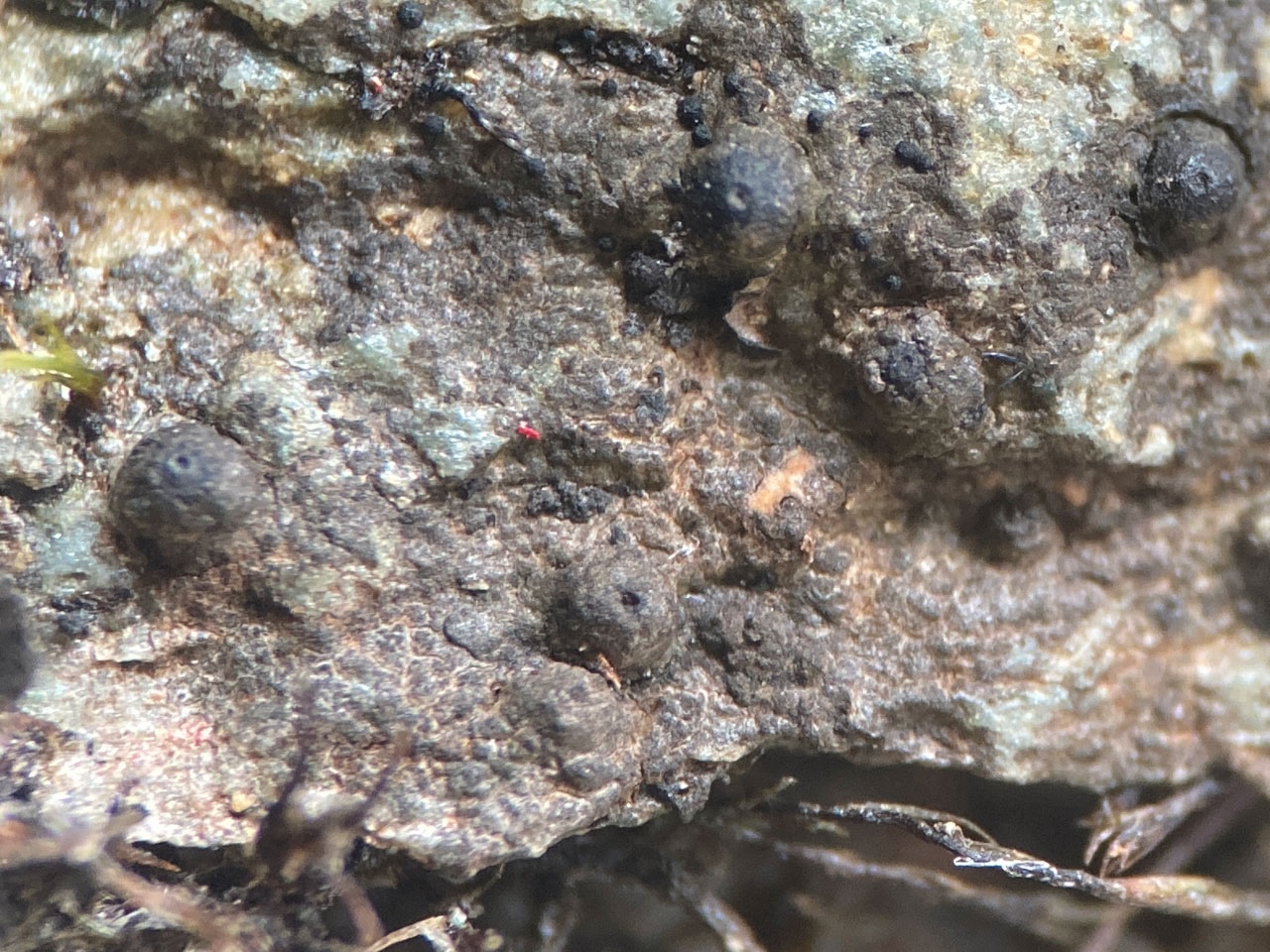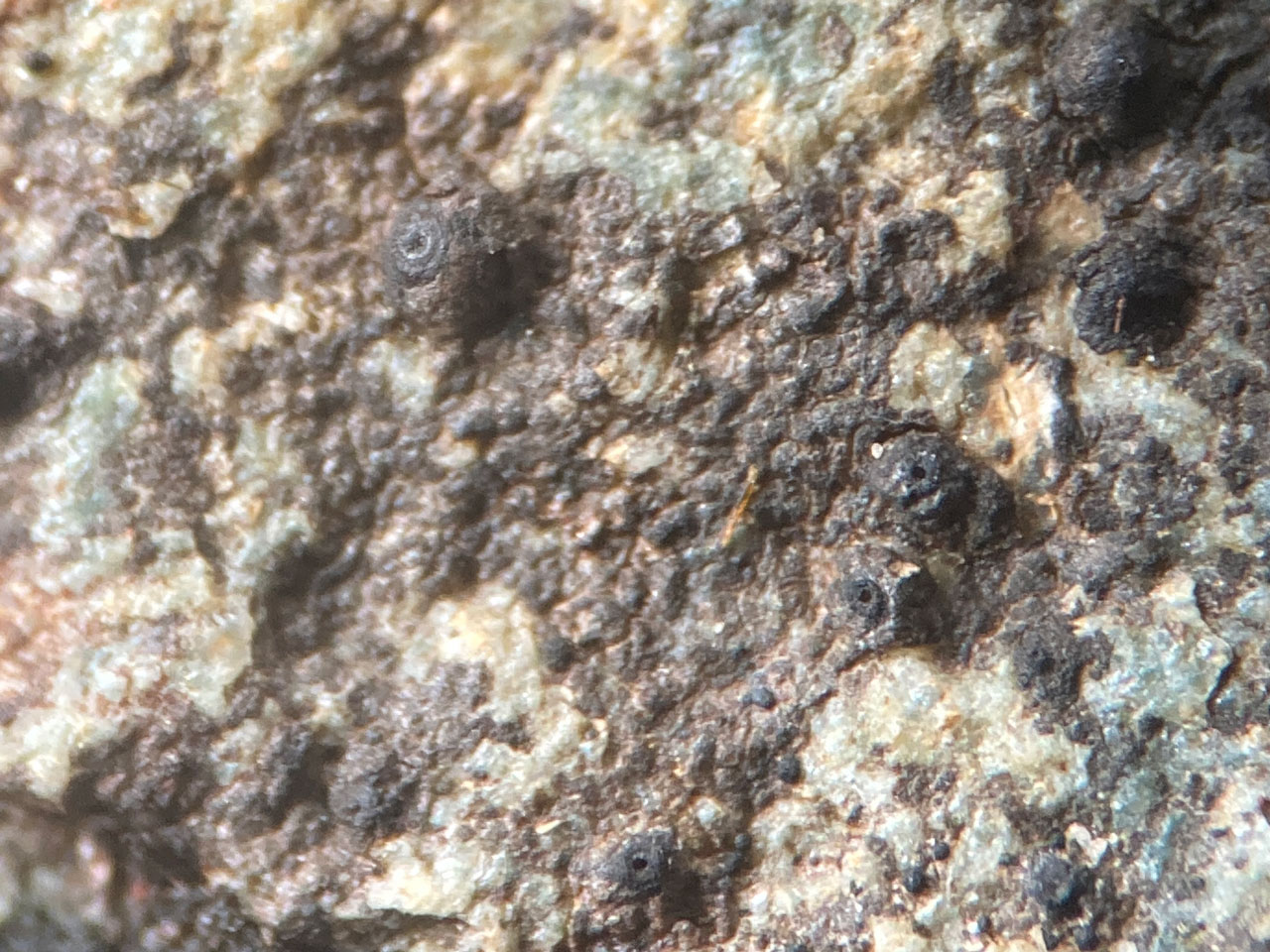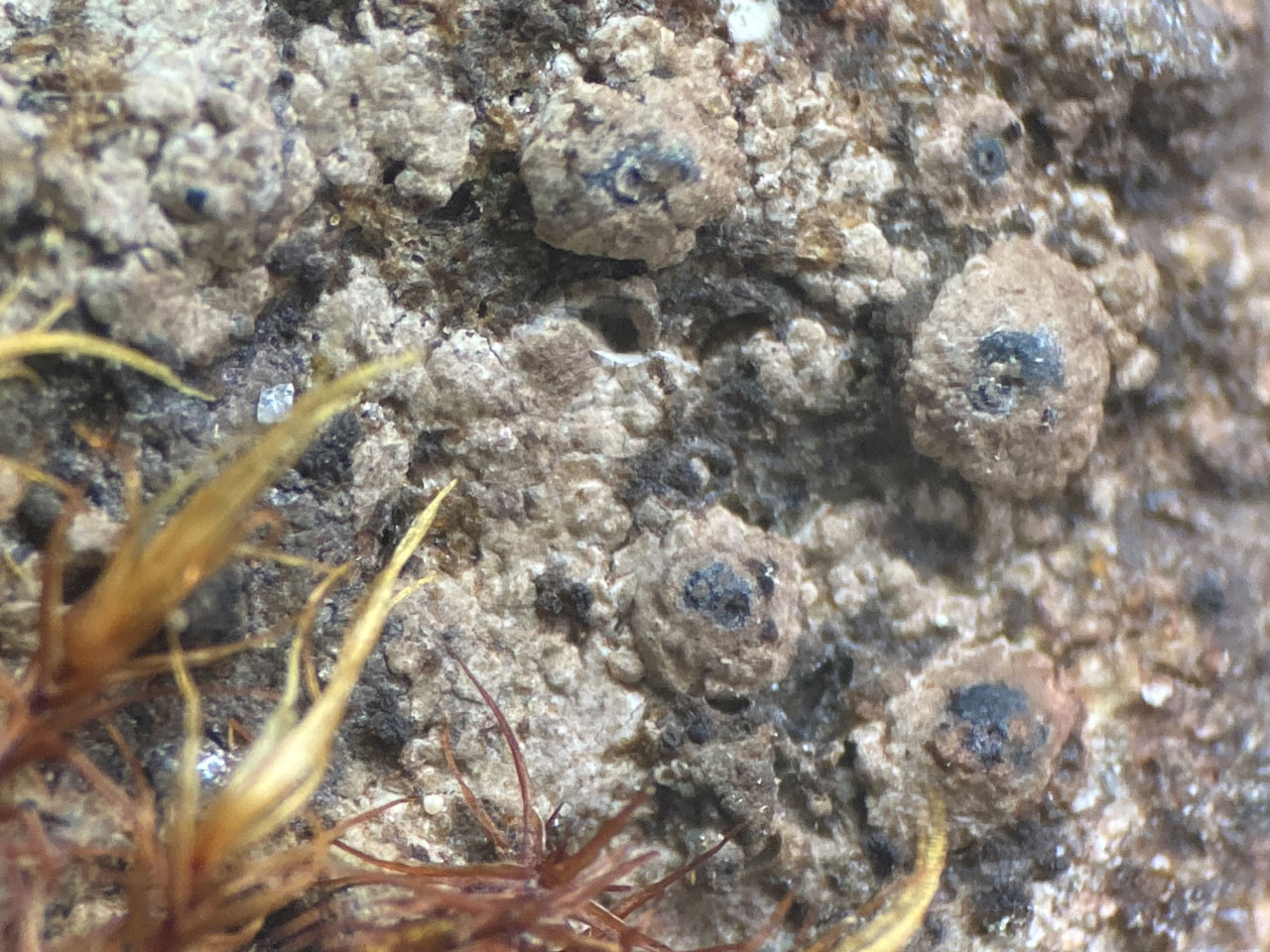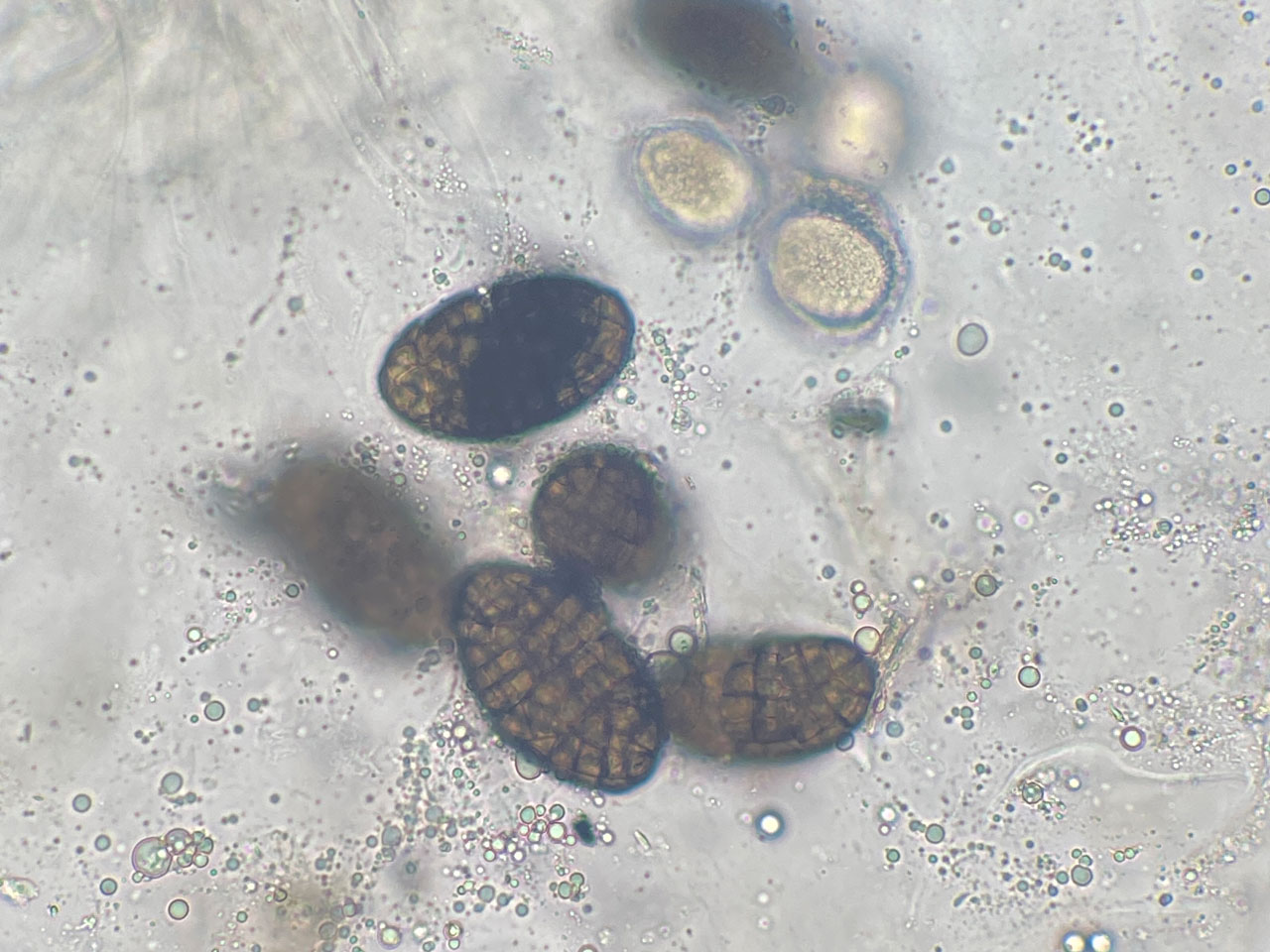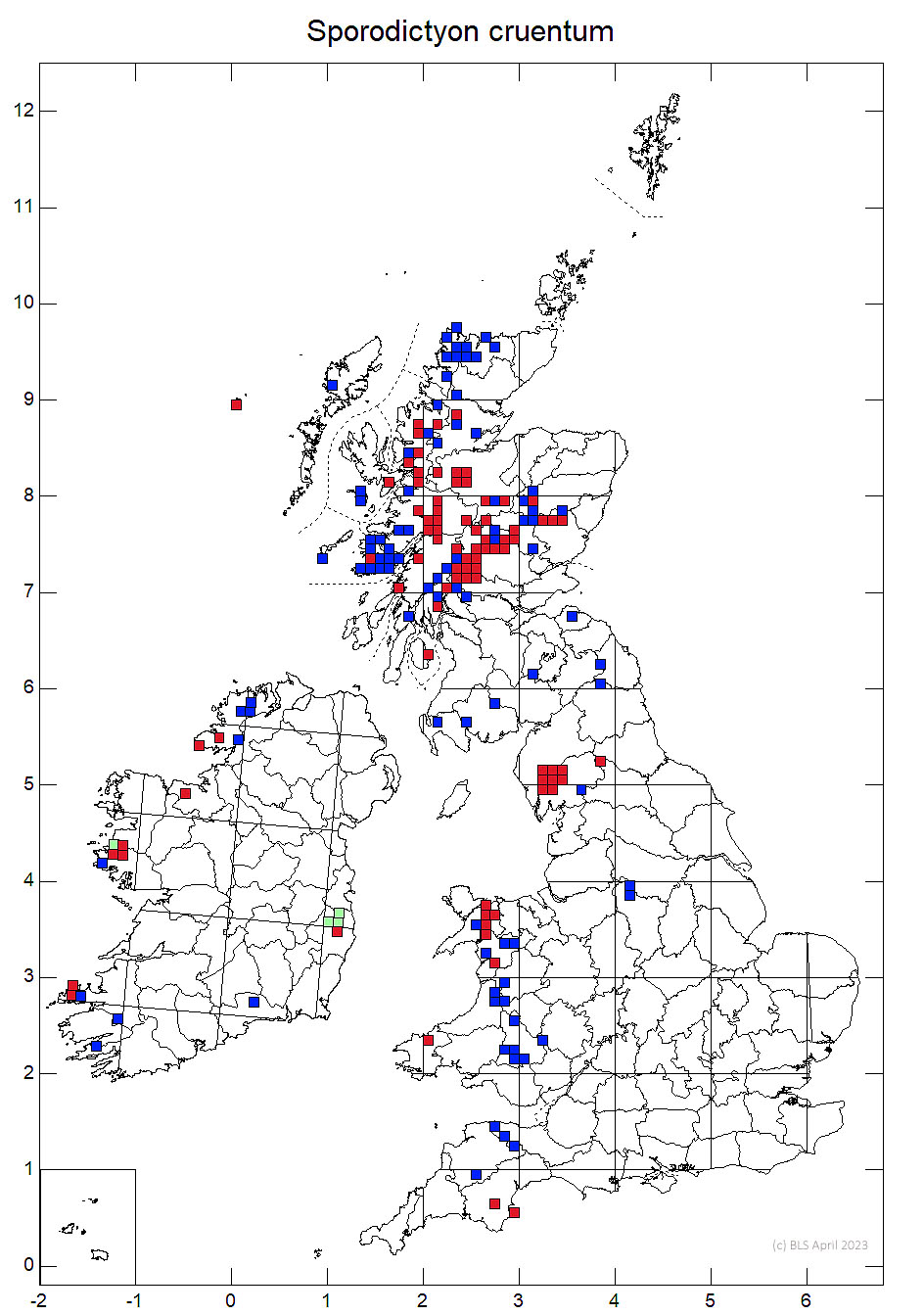Sporodictyon cruentum
A saxicolus lichen widely found on damp rock in the uplands, often recognisable in the field by the brown thallus and large, prominent perithecia, with a thin covering of thallus.
Thallus superficial, usually well-developed, thin, smooth or uneven and with small areole-like convexities, continuous or somewhat cracked, grey-green in shade to brown when well-lit; cephalodia absent. Perithecia forming projections 0.5–0.7 mm diam., often covered to the apex by a thin, smooth or somewhat irregular layer of thallus, often partly lost and exposing the black perithecium. Ascospores muriform, medium brown when mature, occasionally dark brown but with the cell outlines rarely obscured, (47–) 55–65 (–75) × (24–) 29–36 (–42) μm, length/width ratio (1.4–) 1.6– 2.1 (–2.5).
Often recognisable in the field by the brown thallus and large, prominent perithecia, with a thin covering of thallus. The thallus is sometimes verrucose, but not as strongly as in Sporodictyon schaererianum which has darker and larger ascospores. S. terrestre differs in the colourless ascospores and usually the presence of cephalodia.
On damp siliceous rock; in streams, on flushed bedrock and on stones on damp ground, including base rich small sedge dominated flushes; particularly in the uplands.

Locally frequent. S.W. and N. England, Wales, montane Scotland, W. Ireland.
Orange, A., Cannon, P., Prieto, M., Coppins, B., Sanderson, N. & Simkin, J. (2023). Verrucariales: Verrucariaceae, including the genera Agonimia, Atla, Bagliettoa, Catapyrenium, Dermatocarpon, Endocarpon, Henrica, Heteroplacidium, Hydropunctaria, Involucropyrenium, Merismatium, Nesothele, Normandina, Parabagliettoa, Placidopsis, Placidium, Placopyrenium, Polyblastia, Psoroglaena, Sporodictyon, Staurothele, Thelidium, Trimmatothele, Verrucaria, Verrucula, Verruculopsis and Wahlenbergiella. Revisions of British and Irish Lichens 31: 1-104.
Text by Neil Sanderson based on Orange et al (2023)
